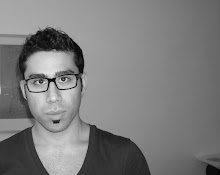What is it about phenomenology that interests me?
How do I see phenomenology in architecture or the built environment?
What arguments can I make?
The fundamental flaw/issue for me in contemporary architecture is its inability to connect to the human body. Questions of scale may be addressed however, things like the interaction between person and building never move beyond the simple turn of a door handle and even that is not usually premeditated by the architect. It’s most often simply a matter of cost and/or aesthetic. Little thought is given to function, touch and the action thereof.
I want to explore the possibility of an architecture that fully engages the body and mind. I find it ironic that LeCorbusier coined the term “a machine for living” when speaking about a home considering his early work was so sterile and gave little thought to the sensory experience of the body. This is when I believe it became apparent that his early work was not where he intended it to be allowing him to move on to true machines for living such as the monastery at La Tourette. The greatest difference between the two being that once he fully understood the spirituality of the human body, he was able to understand human beings as more than just a proportioning system. A true machine for living complements the human body and forces a reaction from it and in some cases reacts to it.
I hope to understand further the phenomenology of the body to be able to impart this knowledge and create a more humane, sensual architecture. One that fully complements our being; aurally, visually, haptically. I believe that architecture today is too concerned with the beautiful image, that which is framed by the photographer is much more important than that which is experienced by the user.
Neglect for the peripheral view and the other senses.
I would like to argue that people and the art of building are being truly deprived when architects neglect to understand fully the workings of the human being. Experiences can be enriched through this greater understanding.
“Architecture has its own realm it has a special physical relationship with life. I do not think of it as either message or symbol, but as an envelope and background for life which goes on in and around it. A sensitive container for the rhythm of footsteps on the floor, for the concentration of work, for the silence of sleep”
Peter Zumthor
What if architecture responded to the movement of the body? What if it enhanced your sense of being? Could it possibly force you to feel a certain way, to feel certain things?
Can architecture and nature act in tandem to augment our most basic feelings?
I would like to explore these possibilities on a beachfront site in Brazil. I believe that this sort of architecture can be further amplified by the sheer grandeur of the natural surrounding of Praia do Pulso. The proximity to the crashing waves, the tropical climate of the Mata Atlantica and the solitude of a very sparsely populated region coupled with an exploration of these ideas can create an architecture that brings one further into touch with nature and their own selves.
